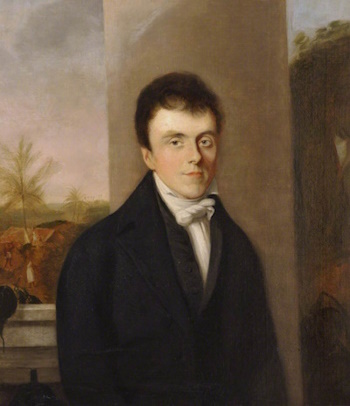
Missionary
Henry Martyn is an outstanding example of the missionary zeal of the 19th century evangelical movement. Henry had a flair for languages that enabled him to make a significant contribution to the church in India and the Middle East.
Henry was raised in a Christian family and educated at Cambridge He graduated in 1801 and became a fellow of St John’s College in 1802. While at Cambridge during a period of personal turmoil, he encountered Charles Simeon, the great evangelical organiser, preacher and pastor. He had originally planned to be a lawyer, but under Simeon’s influence decided to seek ordination, later becomning Simeon's curate.
When Charles Simeon was approached by an evangelical chaplain with the East India Company and asked to recommend additional chaplains, he suggested Martyn among others. He was accepted, and sailed for India in 1805. Evangelical chaplains at Calcutta had to contend with an indifferent British army and a business community intent on exploitation, quite apart from the problems of any mission to India.
Martyn with his linguistic abilities, was asked to translate the New Testament into Hindi and to supervise the Persian and Arabic translations. While also preaching and teaching in the mission’s schools. By 1810 he had finished the Hindi translation of the New Testament, which was regarded as a fine piece of work. He also translated frequently used parts of the Book of Common Prayer. For the Persian and Arabic versions he had the assistance of a Christian Arab, Sabat, but it became clear that these versions needed improving. He was also working on a version of the psalms in Persian.
Martyn was suffering from tuberculosis (consumption), and it was suggested that he go to sea. He chose to sail to Persia to work on his Persian translation there. In June 1811 he arrived in Shiraz in Persia. He completed the revision of the New Testament, engaged in dialogue with Moslim religious teachers, including a Sufi mystic, and maintained a lonely witness to Christianity. He left Shiraz in May 1812, hoping to revise the Arabic New Testament in Arabia, travelling overland to Teheran and then Tabriz, but fell ill in Azerbaijan. He decided to return home to England to recuperate. He got as far as Tokat in Armenia and died there. He was buried by Armenian Christians. His life of devotion to the mission of the church made a great impression in Great Britain.
BORN:18 February 1781,
Truro,
England
DIED: 16 October 1812,
Tokat,
Turkey
 Welcome
Welcome Calendar
Calendar Today's Word
Today's Word Lauds
Lauds Terce
Terce Sext
Sext None
None Vespers
Vespers Compline
Compline Matins
Matins